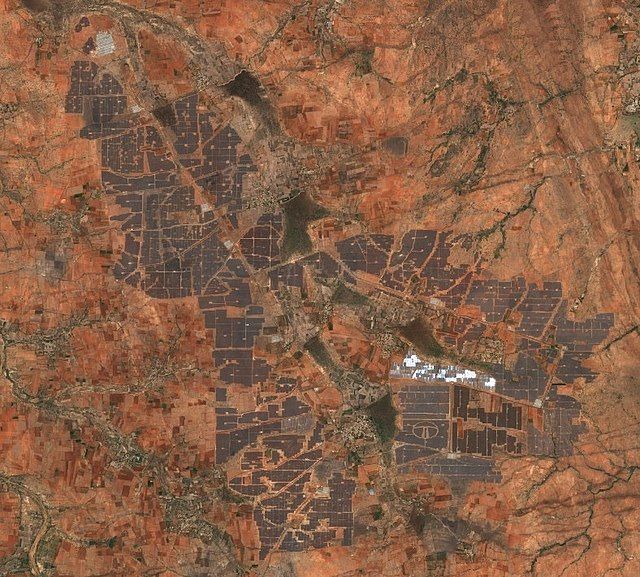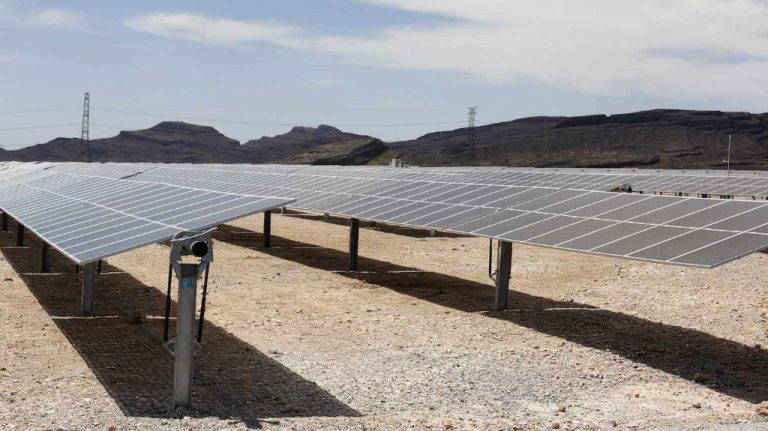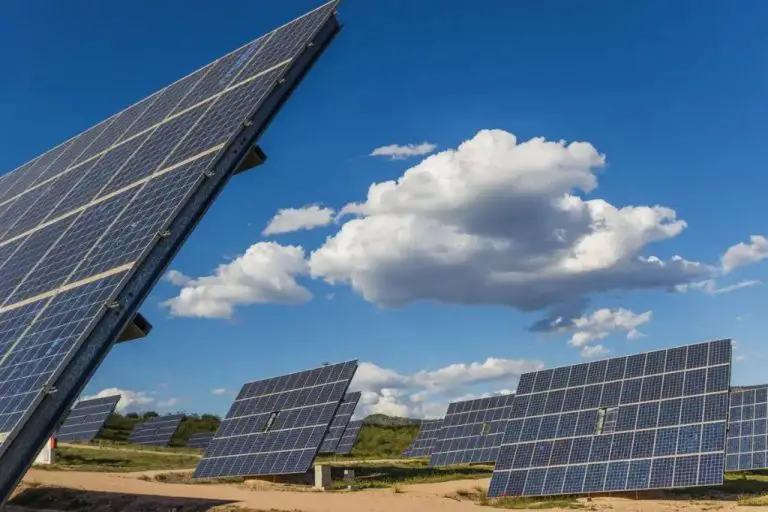What Is The Position Of India In Solar Energy?
Solar energy is an abundant, renewable resource that can help meet the world’s growing energy needs in a sustainable way. As one of the fastest growing economies, India has massive energy requirements to support its development. The country aims to expand its renewable energy capacity to help meet electricity demand while also addressing environmental concerns.
India is blessed with abundant solar resources, receiving about 300 days of sunshine a year on average. Solar has emerged as a promising solution to meet the nation’s burgeoning energy needs in a clean manner. The Indian government has set ambitious solar targets to help tackle issues around energy security, energy access and climate change.
India’s Solar Potential

India is geographically located in an ideal position to harness solar energy due to its abundant solar insolation levels. The country receives solar radiation of over 5,000 trillion kWh per year, which is far more than the total annual energy consumption of the country (cite) Global Solar Inverter Markets.
Most parts of India receive 4-7 kWh of solar radiation per square meter per day. North western states including Rajasthan and Gujarat as well as the high altitude regions of Jammu & Kashmir and Himachal Pradesh have the highest solar insolation, receiving over 6 kWh per sq m per day. Western and Southern states also have high daily solar radiation levels (cite) Global Solar Inverter Markets. This abundant solar resource allows India to generate solar power across the country.
Current Solar Installations
India currently has over 41 gigawatts (GW) of installed solar generation capacity as of December 2021. This is up from just under 3 GW in 2014, showcasing massive growth in solar adoption over the past decade.
Annual solar installations have risen rapidly, from around 2 GW added in 2014 to over 10 GW added in 2021. In 2020, India ranked fifth globally in terms of new solar installations.
Rajasthan, Gujarat, Andhra Pradesh and Tamil Nadu are among the leading states for cumulative solar installations. Rajasthan alone accounts for over one-fourth of India’s total solar capacity. These states have abundant open lands and high solar irradiation which make them conducive for large-scale solar projects.
Government Initiatives and Targets
The Indian government has implemented several major policies and schemes to promote solar energy adoption. Some key initiatives include the Jawaharlal Nehru National Solar Mission, Kisan Urja Suraksha Evam Utthaan Mahabhiyan (KUSUM) scheme, and wind-solar hybrid policy.
Under the Paris Climate Agreement, India has committed to achieving 40% of its installed electricity capacity from non-fossil sources by 2030. To meet this target, the Indian government has set an ambitious goal of installing 100 GW of solar capacity by 2022, later increased to 280 GW by 2030. This is part of the larger goal for India to achieve 450 GW of renewable energy capacity by 2030.
The government has also implemented various incentives and policies to boost domestic solar manufacturing under the Make in India and Atmanirbhar Bharat (self-reliant India) initiatives. These include customs duty protection, Approved List of Models and Manufacturers (ALMM) for solar components, and Production Linked Incentives (PLI) scheme.
Key Drivers of Solar Growth
Three main factors have enabled the rapid expansion of solar power generation in India: declining costs, supportive government policies, and the availability of financing options.
The cost of setting up solar power plants has fallen dramatically over the past decade. Prices of solar photovoltaic panels have declined by over 80% since 2010. Cheaper and more efficient panels, along with economies of scale, have brought down the price of solar power to levels competitive with conventional fuels. This has made solar an attractive investment for power producers.
The government has also created policies to encourage solar adoption. Tax breaks, subsidies, renewable purchase obligations for utilities, and dedicated solar parks with infrastructure have accelerated growth. The government has set ambitious solar targets of 100GW by 2022 and 450GW by 2030.
Access to financing through low-interest loans, government subsidies and participation from public sector banks has enabled more solar projects to be developed. Increased investment from domestic and international companies has also boosted the sector.
Major Solar Power Plants
India is home to some of the largest solar parks in the world. The Bhadla Solar Park in Rajasthan is currently the largest solar park in India and one of the largest in the world, with a capacity of 2,245 MW. It is spread over a total area of 45 sq km (1). Other major operational solar parks include Pavagada Solar Park in Karnataka with a capacity of 2,050 MW, Rewa Ultra Mega Solar Power Project in Madhya Pradesh with a capacity of 750 MW, and Kurnool Ultra Mega Solar Park in Andhra Pradesh with a capacity of 1,000 MW (2).
Some of the upcoming solar parks that are under construction or in the pipeline include the Gujarat Solar Park with a planned capacity of 5,000 MW, the Ananthapuramu Ultra Mega Solar Park in Andhra Pradesh with a planned capacity of 1,500 MW, and the Hyderabad Growth Corridor Ultra Mega Solar Park in Telangana with a planned capacity of 1,500 MW (3). These upcoming mega projects showcase India’s commitment to scaling up solar energy and meeting its ambitious renewable energy targets.
(1) https://byjus.com/free-ias-prep/list-of-solar-power-parks-in-india/
(2) https://www.nsenergybusiness.com/features/largest-solar-power-plants-india/
(3) http://www.heliossolar.in/content/top-5-largest-solar-power-plants-india
Domestic Manufacturing
The Indian government has emphasized boosting domestic solar manufacturing through its Make in India initiative, aiming to reduce reliance on imports and strengthen the local industry. However, India still depends heavily on solar cell and module imports, especially from China.
Some of the leading domestic solar manufacturers in India include Adani, Tata Power, Waaree Energies, Vikram Solar, RenewSys and Premier Energies. Despite growing capacities, their production is still limited compared to India’s overall demand. In 2021-22, India imported $2.5 billion worth of solar cells and modules, accounting for 80% of the market (1).
Ramping up domestic manufacturing has faced challenges like lack of integrated supply chains, cost competitiveness with cheaper Chinese imports, and older technology. The government has tried addressing these issues through production-linked incentives and approved a $2.6 billion incentive plan to boost local module manufacturing capacity to 65 GW (2).
Overall, boosting domestic solar manufacturing aligns with India’s self-reliance goals. But reducing import reliance and competing globally requires major policy support, economies of scale and latest technologies.
(2) https://www.energetica-india.net/articles/sun-shines-bright-on-indian-solar-manufacturing
Challenges
India faces several key challenges in scaling up its solar energy capacity. One major issue is integrating large amounts of intermittent solar power into the grid. India’s grid infrastructure is relatively underdeveloped, especially in rural areas, making it difficult to handle the variability of solar generation (Enphase). Significant investments and upgrades are needed to stabilize the grid as solar penetration increases.
Land acquisition has also posed challenges for utility-scale solar projects in India. Solar parks require large contiguous plots of land, which can be difficult to acquire due to competing uses, ownership issues, and bureaucratic hurdles (LinkedIn). Developers have struggled to find and acquire appropriate land in a timely and cost-effective manner.
Furthermore, India relies heavily on imported solar panels and equipment, making it vulnerable to supply chain disruptions and cost fluctuations. Domestic manufacturing is limited, with most major solar module and cell producers based in China or elsewhere (EAI). Developing India’s own solar manufacturing ecosystem is essential for long-term growth and strategic interests.
Future Outlook
The future outlook for solar energy in India is very positive, with massive growth projected over the next decade. According to the International Energy Agency (IEA), India is expected to install up to 5X more solar capacity by 2030 compared to current levels[1]. Various projections estimate India will have between 320-500 GW of solar capacity by 2030, up from the current 105 GW[2][3]. This massive growth in solar power will help India meet its ambitious renewable energy targets and reduce reliance on imported fossil fuels.
Scaling up solar to such levels can have enormous economic and environmental benefits for India. Widespread solar adoption will help electrify rural communities, create jobs in the solar industry, reduce air pollution from coal plants, and advance India’s climate change commitments. With decreasing solar costs and supportive government policies, India is poised to become a global leader in solar energy over the next decade.
Conclusion
India has emerged as a global leader in solar energy adoption and production. With abundant solar resources, strong government support through initiatives like the National Solar Mission, and rapidly declining costs, India is poised to continue its solar expansion. Some key takeaways on India’s position in solar energy include:
– India has established itself as the third largest solar market globally, after China and the United States. In 2019, India had over 34 GW of installed solar capacity.
– The Indian government has set ambitious targets for renewable energy expansion, aiming for 175 GW of installed renewable capacity by 2022, including 100 GW of solar. This will help India meet its climate goals and provide energy access.
– Government policies like tax rebates, subsidies, and renewable purchase obligations have catalyzed India’s solar growth. The dramatic drop in solar power costs has also been a key enabler.
– Domestic manufacturing of solar components is expanding in India, aligned with the “Make in India” initiative. This creates jobs and reduces import dependence.
– Challenges remain around project delays, transmission constraints, financing, land acquisition, and grid integration of variable solar power. But the government is actively working to address these issues.
– With its huge potential, strong policy support, large market, and entrepreneurial spirit, India seems well-positioned to continue its solar leadership role. With the right enabling policies and frameworks, India can capitalize on its strengths in solar to meet its rising power demands and build a clean energy future.





